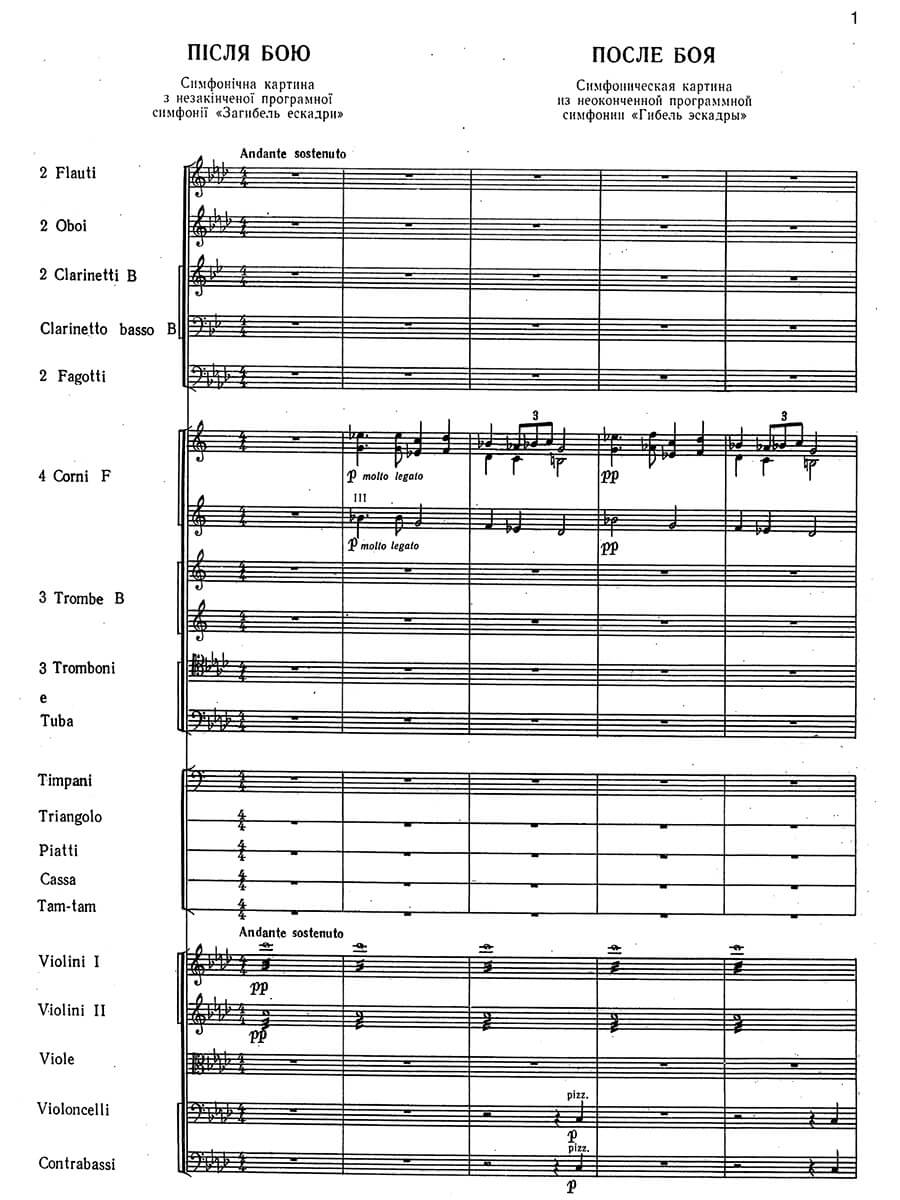“After the Battle” Symphonic Scene
Kosenko, Viktor
22,00 €
Viktor Kosenko – After the Battle
(23 November 1896, St. Petersburg – 3 October 1938, Kiev)
Symphonic picture after the unfinished symphonic poem „Heroic Death
Preface
Almost completely forgotten today, Viktor Stepanovych Kosenko (Віктор Степанович Косенко) was considered one of the leading pianists in Europe during his lifetime and one of the most renowned composers of the Soviet Union. If at all, today we know some of his pieces for children, which are still popular in Slavic piano schools. During his short creative period, he composed more than 250 works, almost half of them for his instrument, the piano. Stylistically, he moves within the spheres of late Romanticism with clear echoes of Ukrainian and Moldavian folk music, which he never quoted literally, but imitated its characteristics. Doric, Phrygian and Lydian modes permeate his music as well as drones and open fifths, which he adopted from folklore. Influences of Frédéric Chopin, Sergei Rachmaninoff and Alexander Scriabin are clearly reflected in the work of Viktor Kosenko; Lyatoshinsky or Tchaikovsky can also be heard.
Since birth, Viktor Kosenko was surrounded by music, his mother Leopolda Kosenko played piano and sang, and also composed; his sister Maria also practised piano diligently and later gave him his first lessons. Singing was a central part of the Kosenkos’ everyday life: They played folk songs, choral works or even scenes from famous operas as a family or together with friends in their living rooms. Already at pre-school age, Viktor could play his favourite melodies on the piano by ear, at the age of nine he attempted to play Beethoven’s Pathétique from memory: he had often listened to his sister practising this piece. Thus, not only did Viktor Kosenko have a good memory for music, but also perfect pitch. Following this confirmation of his talent, his parents decided to cultivate Viktor’s talent more intensively. Later, during his studies, he was frequently interested in looking at a score, putting it aside and reproducing it by heart. In 1908, Kosenko began his training with Alexander Michałowski; in 1914, he finally planned to be officially admitted to the Warsaw Conservatory, where he had been taking lessons since the age of ten. However, World War I forced the family to emigrate from Poland, so the family settled in St. Petersburg, where Viktor enrolled at the Conservatory. There he primarily aspired to a career as a pianist, but at the same time he participated in the composition class of Mykola Sokolov and the instrumentation class of Maximilian Steinberg, both students of Rimski-Korsakov. Sokolov submitted a song by Kosenko to Glazunov, who thereupon awarded him a full scholarship. In St. Petersburg, Kosenko regularly attended concerts of his idols, especially Rachmaninoff and shortly after Scriabin, whose style was to have a decisive influence on the music of the students. …
Read full English and German preface > HERE
| Score No. | |
|---|---|
| Edition | |
| Genre | |
| Size | |
| Printing | |
| Pages |
